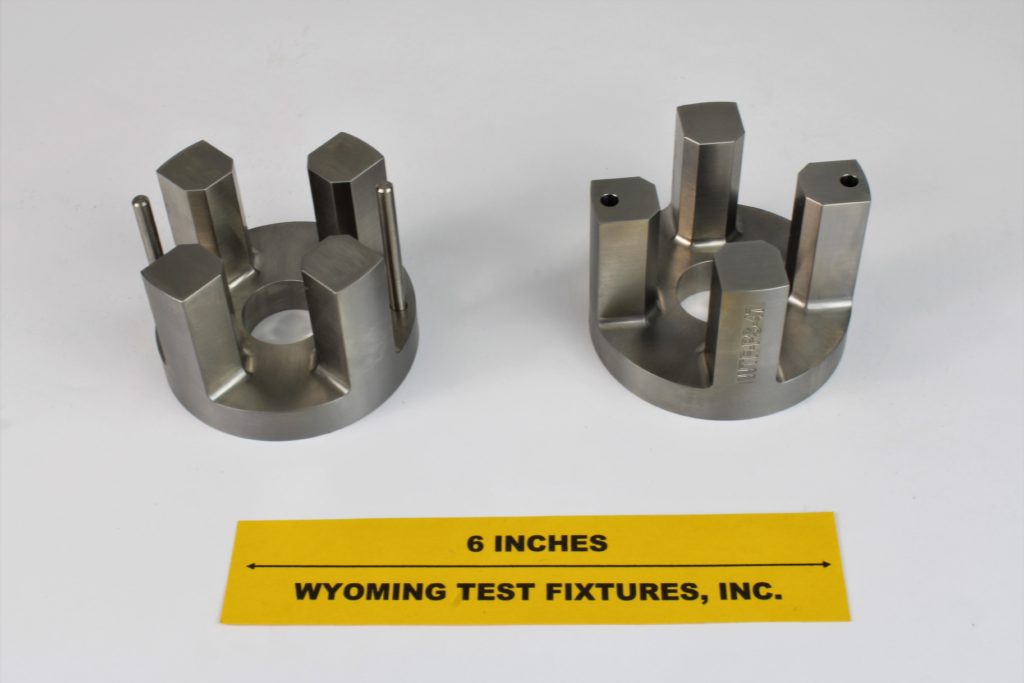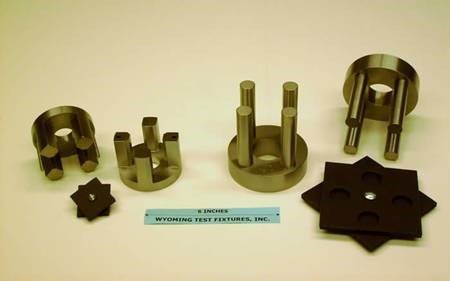Fastener Pull-Through Strength (MIL-STD-1312-8A)
Model No. WTF-PS (Stainless Steel)

Fig. 1: Disassembled fixture with top and bottom halves shown.
This test method, as defined by MIL-STD-1312-8A (Reference 1), was originally intended for use in determining the tensile strength of fasteners. However, its use has been broadened to include pull-through strength, i.e., the strength of the plates the fastener is holding together. Specifically, the pull-through characteristics of mechanically fastened composite plates (joints) have been standardized in MIL-HDBK-17 (Reference 2).
There are a number of fixture configurations in use. One commonly used configuration, specified in Reference 1, is shown in Fig. 1.
The test specimen consists of two 1.5 in. square plates connected at their centers by the desired fastener being tested. The plates are rotated 45° relative to each other, so that the eight corners are all individually exposed. The two pins and indexing holes shown in the photograph maintain proper rotational alignment of the two halves of the fixture. The bottom half of the fixture contacts the four corners of the top plate and the top half of the fixture contacts the four corners of the bottom plate. When a compressive force is applied to the assembled fixture, the fastener becomes loaded in tension. The force required to cause the fastener to pull through a plate is the desired result. Testing details are given in Reference 1.
The above fixture permits the use of a simple test specimen, requiring only one (fastener) hole in each plate. Other fixture configurations are also available, utilizing specimen plates of various sizes. These fixtures typically require multiple holes in each specimen plate, adding to the complexity of specimen fabrication. Two such fixtures are presented in References 1 and 2, respectively.
The fixture of ASTM D7332, Procedure A, as shown at the right in Fig. 2, is one such example. Note that the specimen is somewhat larger, and four holes have to be formed in each plate for the fixture posts to pass through

Fig. 2: Fastener Pull-Through Strength Test Fixtures with corresponding specimens: MIL-STD-8A fixture on left and ASTM D7332, procedure A fixture on right.
Source of Additional Information:
1) MIL-STD-1312-8A, “Fastener Test Methods, Method 8 – Tensile Strength,” Department of Defense, Washington, DC, October 1984.
2)MIL-HDBK-17-1E, Polymer Matrix Composites, Volume 1 – Guidelines for Characterization of Structural Materials, 1997, pp. 7-36 to 7-44.

